Now that the Internet industry has been mentioned in the television industry, people will soon associate the “millet†and “LeTV†companies. Whenever the two companies have a little trouble in the industry, both the media and the consumers will completely shift their sights to On them, this is not March 24, Xiaomi TV was born out of the 40-inch, and this gives LeTV a new sense of crisis.
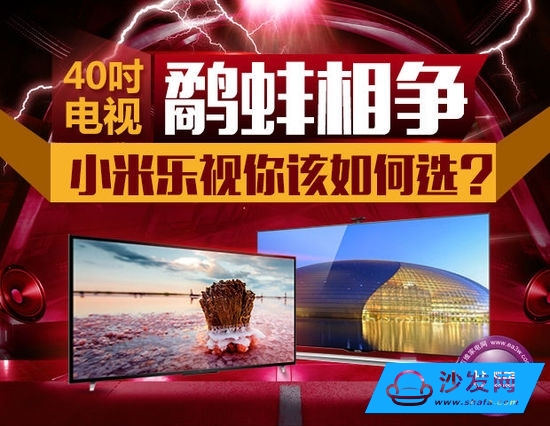
Previously, we knew that Xiaomi and Leshi had very different routes. Xiaomi only made one TV in one year, and LeTV had 40 to 70-inch TVs in mainstream sizes. Although the company is in a competitive relationship, the competing television fields are different, but the 40-inch launch of Xiaomi TV will break the relatively harmonious competition between Xiaomi and Letv.
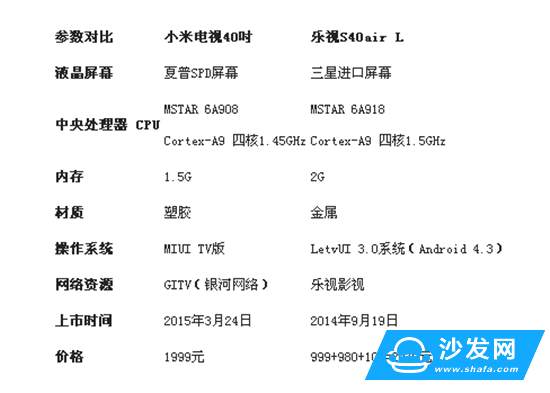
Since Xiaomi has already set foot in the field of TV industry TV, this problem has come! In the end, when consumers purchase products, how should they choose between the two Internet companies? Is selected Millet TV 2 40 inches? Or is it LeTV S40 Air L? Next, Xiao Bian made a comprehensive comparison of the five aspects of appearance, hardware, price, system, and content, so that consumers really understand the two products in the end who is the most cost-effective models!
Comparison of appearance
As two Internet companies, Xiaomi and LeTV have a big difference in the design of their products. The Xiaomi TV 40 inch is an integrated design. The outer frame is painted with a bright surface. The edge of the arc design makes the edges of the frame very balanced. Y-type aluminum Alloy base makes the product rich in fashion elements. The LeTV S40 Air L adopts the Open Cell integrated design, with a 5.9mm extremely narrow metal frame, metal brushed backplane, and polycarbonate transparent windows. The cloud arc metal base highlights the unique artistic atmosphere of the product.

Through the product's physical comparison chart can be clearly seen, in the design of the appearance of music as the S40 Air L's fashion elements are more prominent, and millet TV 40 å‹ appearance design some law-abiding, from the perspective of ordinary consumers, I believe people must be more inclined The design of LeTV S40 Air L. If you compare the highlights of the two products, millet TV 40 å‹ the whole body of the silver aluminum base is the most interesting part, and S40 Air L 5.9mm extremely narrow metal frame and cloud arc metal base is definitely the highlight of this product Where

In recent years, the metal material has begun to be used in a large area of ​​television products. In the contrast of appearance, the S40 Air L uses a full metal material, which is more in line with the "beauty" of the television industry, and the millet TV 40 inches in addition to the base. Other parts are still made of plastic materials. No matter if it is the appearance of the appearance or the feel of plastic material should be slightly inferior, comprehensive content can be seen in the front, LeTV in the design of television products to do enough effort, and millet TV 40 å‹It seems boring.
I believe it goes without saying that Xiaomi TV 40å‹ and LeTV S40 Air L have an advantage in appearance. You already have an “answer†in mind.
Hardware comparison
In the comparison of hardware, Xiaobian made comparisons around screens and chips.
The most important thing for TV is the screen. Xiaomi TV uses 40-inch Sharp SDP panel. LeTV S40 Air L uses Samsung screen. If it is purely on the screen, both Xiaomi and LeTV are using the world's first-line brand products. Bo Zhong. Sharp, Samsung's LCD screen has its own inherent advantages, in terms of image quality performance is indeed better, but the LCD panel is one of the decisive factors of high quality, but by no means all. Because liquid crystal panels also include driver ICs and circuits, as well as more than a dozen components such as polarizers, filters, polarizers, backlight systems, etc., the pros and cons of these parts will also affect the quality of the final performance of the panel.
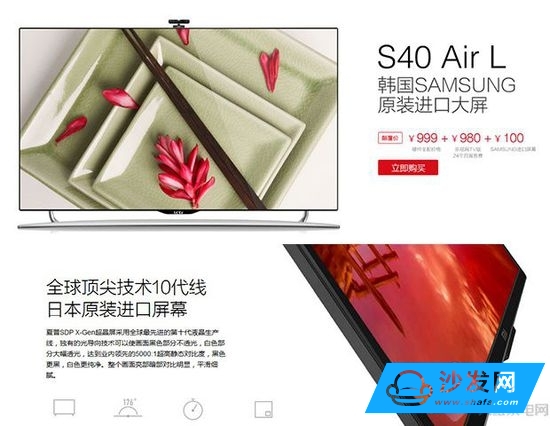
Sharp and Samsung use soft-screen technology with side-in LED backlight design. The performance of the screen colors is very good, but the viewing angles of the two are slightly poor, the viewing angle of the millet TV reaches 176 degrees, while the viewing angle of the Levision S40 Air L reaches 178 degrees, and the static contrast is the same. 5000:1. The screen itself also has the distinction between high-end and low-end, and the screens used by both Xiaomi and LeTV are almost the same grade. So the specific difference is not great.
There is a big difference between Xiaomi and LeTV in the use of chips. Xiaomi TV is using the MStar 6A908 chip that was launched in 2013. LeTV uses the MStar 6A918 that was launched in 2014. The biggest difference between the two chips is just like intel's core i7 and i5. The performance of the MStar 6A918 is slightly better than that of the MStar 6A908.

The MStar 6A908 supports 1080P video decoding on graphics processing and supports 1.5GB of RAM, while the MStar 6A918 supports 4K video decoding and 2GB of RAM for image processing. The Lexus MStar 6A918 chip decoding capability is even more outstanding when running large-scale APP applications. And, although the two ARM chips are all using Mali-450 MP4 GPUs, LeTV's 1.5GHz is a bit more powerful than the millet TV 2's 1.45GHz. On the storage side, although the two stores use 8GB storage units, the 2GB memory of the LeTV S40 Air is obviously more than the 2.4GB of the 240-inch TV.
In terms of hardware configuration, both Xiaomi and LeTV can be said to be indiscriminate in the use of the screen. However, millet does not dominate in chip and memory, but LeTV's advantage is even more obvious.
price comparison
A year ago, the S40 Air was priced at 1979 yuan, and later upgraded to S40 Air L, the price has increased to 2,079 yuan, and the 40-inch Xiaomi TV has just released is priced at only 1999 yuan. It is cheaper than the 40-inch millet TV, although it is only 80 yuan, but the low price TV consumers often value is such a small amount of benefits.

In terms of product selling prices, LeTV and Xiaomi follow a different route. Xiaomi is facing the consumer with the lowest selling price, while LeTV sells through hardware price + service content + screen accumulation. If LeTV is not bundled, then the price of 999 yuan can kill the entire TV industry. In the way of purchase, the current method of buying 40-inch millet TV adopts the method of pre-order buying. If the user purchases the product within 7 working days, it can receive the goods. The music as the S40 Air L is the use of direct purchase to wait for 4-5 weeks shipping delivery mode, compared to domestic companies unlimited sales, the two companies are not very grounding gas approach! The feeling left for Xiao Bian is to look at the production of the list, and use the phrase “not to see rabbits not to spread the eagle†to describe the most appropriate!
System comparison
Mentioned that many people in the MIUI system is not unfamiliar, with the outstanding influence of Xiaomi mobile phone, MIUI has now become an intelligent system that is deeply loved by 100 million users. Xiao Bian itself is actually a user of the MIUI system. The MIUI system initially left me with the most profound impression that it is very easy to use, and the modular application interface can give people a more intuitive visual experience. Millet TV (parameter picture article) ultra-low power standby mode, you can achieve the second speed boot. When watching TV programs, program reservations and viewing of program listings can be made through the "Confirmation Key". The MIUI TV system under the control of the 11-key remote controller is straightforward and can be used without any training.

The LetvUI 3.0 system that LeTV has is composed of five desktops: smart applications, video recommendations, carousel desktops, search desktops, and video sources. It is based on the networked broadcast desktop exclusively created by LeTV, and the search desktop for the entire network. Convenient and fast signal source desktop live interactive locks all the highlights for you. In addition, LetvUI 3.0 also supports rich multi-screen interactive, voice input/control, cloud services and other functions, which can be fully enjoyed in the full range of LeTV TV Super TV. Unlike other brands, LetvUI is a multi-theme platform that allows users to change their favorite topics. This is the first in the industry.

If we compare the systems of the two TVs, we will find that the MIUI TV system and the LetvUI 3.0 system each have their own unique advantages. The products of the multi-screen interaction, weather broadcast, USB decoding, and game features are roughly the same. The downside is that the MIUI system has no voice control, carousel and other features, and LetvUI 3.0 is very powerful. There is a big difference in the sense of use of the two systems. The MIUI TV system can give people a simple and easy-to-use experience. The overall look is concise. Although the LetvUI 3.0 system can give people a full-featured experience, the entire system interface is too complicated.
If the two products are very easy to use, Xiaobian still prefers the MIUI TV system.
Content comparison
In China, only companies with Internet broadcast control licenses can play video content on their TVs. At present, SARFT has issued seven integrated broadcast control licenses for Internet TV. Licensed licenses belong to companies in the broadcasting and television industry. These include: BesTV, Mango TV, Galaxy Connect, Huadian, CNTV and other companies.
The video platform owned by LeTV is a massive amount of content that is integrated with Wada. In addition to the video content that can be watched by Wah Sat, the user can watch the TV version of LeTV.com, which contains the industry's most comprehensive copyright library of movies and TV dramas, and more than 100,000 episodes of television dramas. More than 5,000 movies are China's most complete and legitimate film and television library, as well as rich self-control, anime, fashion, documentary, etc., as well as the industry's most comprehensive sports events.

In addition, the user can also watch TV programs through the carousel channel. At present, there are 19 channels for the LeTV carousel channel. According to the needs of different users, different dimensions are classified. Classified by definition, contains 1080P HD channels. Classified by video categories, including movies, TV dramas, sports, animation and other channels; classified according to the type of television drama, is divided into American dramas, Korean dramas, etc.; according to the hit drama classification, divided into Longmen Escort Channel, rumors channel, etc., content is rich .
The video content used by the newly launched Xiaomi TV 40 has been transformed from iCNTV to the Central Galaxy Internet TV Integrated Broadcasting and Control Platform (GITV). It has a huge amount of high-quality video content resources and has captured 90% of the videos in the “Baidu Search Billboardâ€. Content, gathering more than 240,000 hours of HD genuine video resources. Compared with the previous content, the cooperation between Xiaomi and GITV has enriched the content that users can watch again. This is a very good thing for users to come to the event.
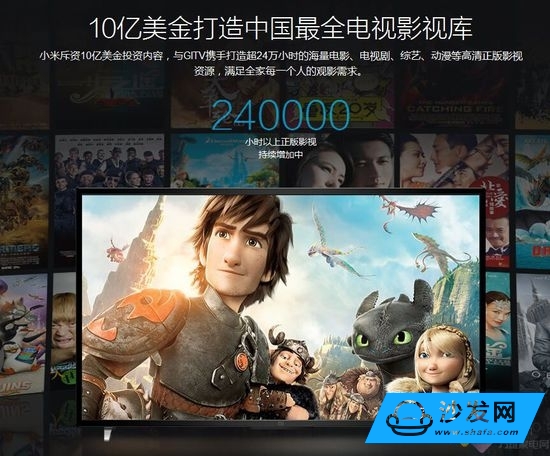
If Xiaomi TV's 40-inch video content is compared with the LeTV S40 Air L, although Xiaomi has recently invested a lot of money to improve the video content, it is still not possible to work with LeTV, which is in the first camp of video websites. After all, music has an unshakable advantage in terms of copyright resources. At present, most of Xiaomi’s content still depends on third parties to provide content. The content owned by Xiaomi is almost as long as the companies that use the GITV video platform have content. And LeTV itself is the content of the production side and the production side, which owns the department's video content can be done on the whole network exclusive, and the TV includes the carousel function can fully reflect this product's absolute advantage in terms of content.
Xiaobian's point of view
It is said that the competition between the two tigers will inevitably have an injury, but this contest between Xiaomi and LeTV in the TV industry has a more important role in promoting TV. The products they launched occupy an important share of the TV market with their respective advantages. In this comparison, Xiao Bian has compared the appearance, hardware, price, system, and content of the product.
In terms of appearance, Le S40 Air L's all-metal body design + cloud arc base with fashion highlights, become a leader. In contrast to the hardware, the LeS40 Air L, with the MStar 6A918, supports 4K video decoding and 2GB of RAM for image processing. In the price competition, Xiaomi TV 40 won the price of 1999 yuan as the cheapest model of these two products. In the competition of the system, the millet MIUI TV system prevailed in an easy-to-use manner. In the final video content competition, LeTV as the content of the production side and the production side of the advantage once again won.

I believe that through the previous competition, consumers have realized how to choose between Xiaomi TV 40 and LeTV S40 Air L! It is hoped that through this comparison, the two Internet TV companies, Xiaomi and Leshi, can find their own deficiencies and gradually improve their own products so that they can occupy a place in the fiercely competitive TV industry. In the future, they can present more “good quality†to consumers. "TV" contributes to the development of the television industry.
ZhenHuan's constant voltage mode led driver use plastic material housing with IP20 level for indoor use only, accepts the output power range from 3 Watts to 60 Watts with global safety certificates. The series led power transformer is adopt universal input voltage range from 110vac to 240vac and designed to meet UL Recognized style enclosures.
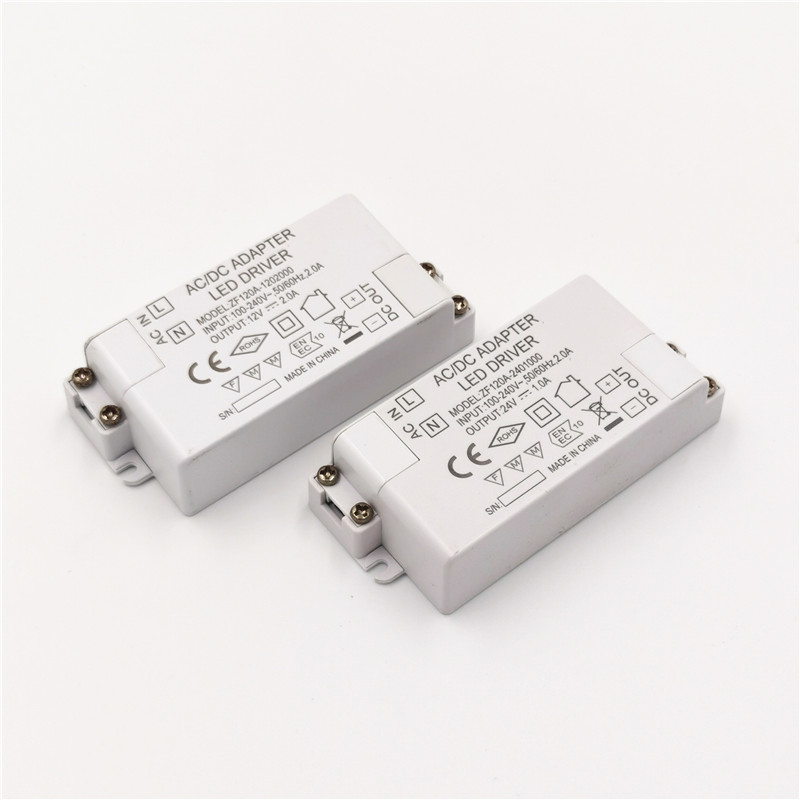
110-240VAC Plastic Case Led Driver
Led Driver Power Supply,Led Transformer,Transformer 220V To 12V,Ul Led Driver
Shenzhenshi Zhenhuan Electronic Co Ltd , https://www.szzhpower.com
